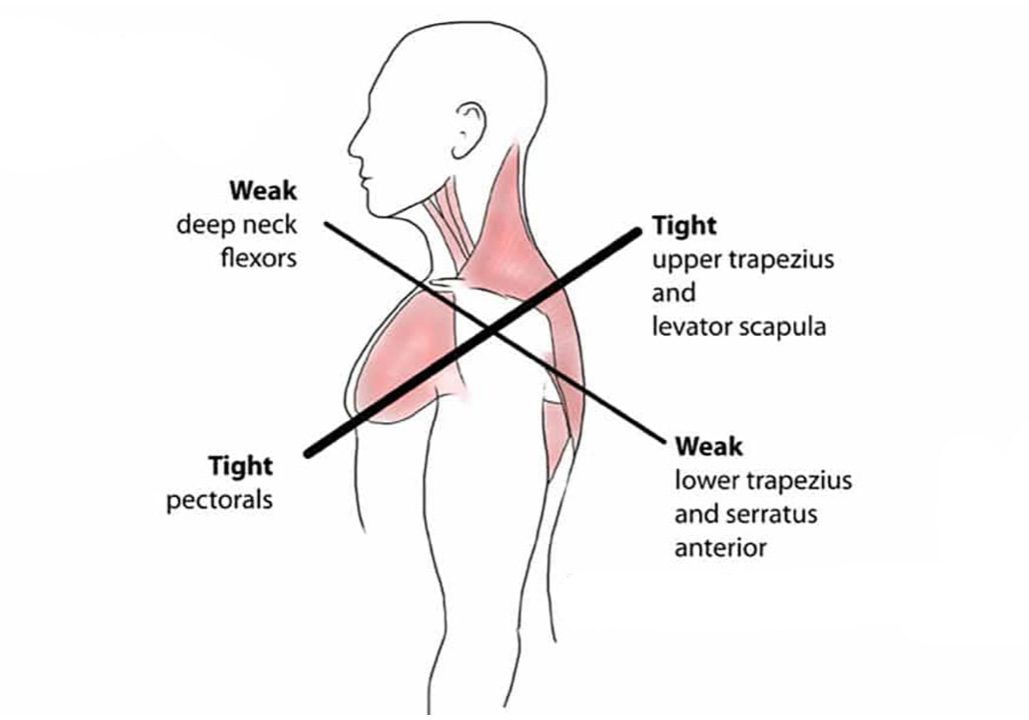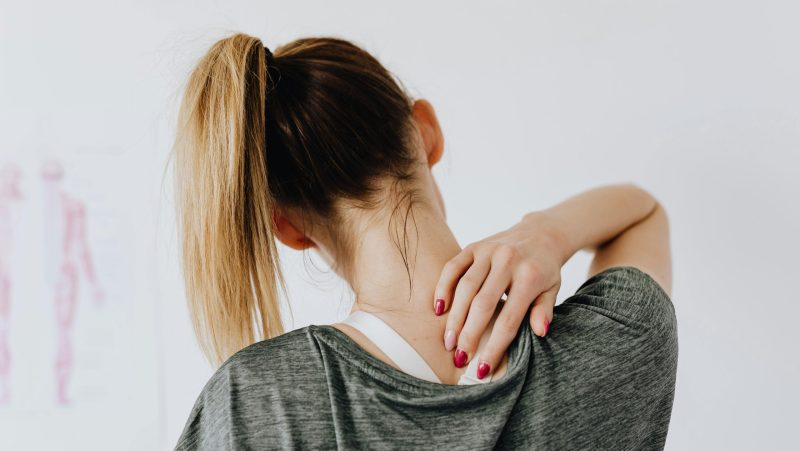
Easy Yoga Pose to Ease Tension
One Easy Yoga Pose to Ease Tension Caused by Upper Crossed Syndrome
Reading time: 3 minutes
Instead of sitting still, the human body is built to move, the evidence of that is hidden in the way how our body is structured. Inside us, there are over 360 joints, and about 700 skeletal muscles that enable us to make easy, fluid movement. And our skin is elastic, meaning it molds to our motions. But nowadays, our lifestyle makes many of us sit much more than we move around. It is true sitting for a brief of time can help us recover from stress, long time of sitting hampers blood circulation, as well as prevents nerve cells from benefiting from movement.
Another big issue of sedentary lifestyle is sitting up tall is a hard habit to develop. If you tend to round forward while sitting, plenty of postural problems can affect your muscle and skeletal systems. No matter where you sit, at a desk, driving a car, or on your sofa, it is always ideal to focus on lifting your chest, neck and head toward the ceiling, like someone is pulling your head. Because sitting up tall is crucial to maintain correct alignment of your vertebra, in this way the stacking of your spine will help other pieces of your kinetic chain fall into place. On the contrary, the complication of incorrect sitting posture includes back pain, spinal dysfunction, joint degeneration, rounded shoulder and etc., as seen in Upper Crossed Syndrome.
What is Upper Crossed Syndrome?
Simply put, Upper Cross Syndrome is a muscle imbalance syndrome on your shoulders, neck and chest, some of them are too weak and some are too strong. When view from side of the upper body, those muscles seem to group in the shape of a cross, that is where the name of UCS come from.
The most significant signs of upper crossed syndrome are rounded shoulders and a leaning-forward head position. This pattern is common in people who sit for long hours at their desk staring at cell phone or screens. And lacking sufficient exercise make the situation worse.
I personally have developed upper crossed syndrome after years of office work, prolonged sitting almost ruined my body. When the muscles on shoulders, neck, back and chest do not work as they should, the result is quite painful and devastating.
What causes Upper Crossed Syndrome?
Poor postures, sitting for too much time, repetitive movements, and injury or congenital disabilities are leading causes contribute to the development of upper crossed syndrome. People who work in jobs that require long hours of sitting or repetitive movements are more likely to develop upper crossed syndrome.
An effective way to fight upper cross syndrome is by maintaining good posture. When you are in seated posture, sit up tall with your back straight and your head squarely between your shoulders, and at all time avoid slouching or leaning to one side, always let your seat bones equally carry body weight.
Once you have developed upper crossed syndrome, adopt chest or heart opening exercise to help ease tension on your back, chest, neck and shoulders.
Why chest opening?
Nowadays, many people are rounded forward in their chest to some degree. Practicing chest opening poses benefit everyone of us, especially for those with imbalanced muscles on the upper body. In chest opening poses, tight, shorten muscles on the front are lengthened and opened, lengthened or weak muscles on the back of the trunk are shortened and relaxed. This counteracts the effect of upper crossed syndrome.
After years of regularly yoga practice, I have recovered from upper crossed syndrome. Yoga benefits me by helping my body align correctly while also bringing an awareness and mindfulness to my body. Now I am capable to sit up tall at all time, my breath has been improved, those symptoms like shoulder and neck tightness, upper back pain, they are all gone.
First thing first, the beginning step to shake off upper crossed syndrome is to ease tension caused by it. Chest opening yoga pose offers a good approach to do so. It is quite a simple, relaxing pose that many yogi love so much, try on this pose and notice how open and upright you feel after.
Step by step instructions
Before start, fetch two yoga blocks, it is ok not to put on your yoga clothes as this is a relaxing pose.
- First, put one block on its lowest side a few inches away, then place the second block on its second height a few inches away from the first block.
- Second, recline your upper body onto both blocks, move the lowest height block to place that is directly underneath the shoulder blades, along with lying down, use your arms to place your head right on the second block.
- Leave your arms open by placing them on both sides.
- Close your eyes and relax for 5 to 15 minutes.
- Slowly put your elbows on the ground to support your upper body, use your core strength to pull up and release from the pose.
- One important reminder is do not stay in the pose for over 15 minutes, better to set a count-down alarm in case you fall asleep.
The most amazing things about this pose are, first, it is for everyone, you do not have to be a yoga guru to perform this pose, just put your body in position and leave the rest to gravity; second, this is a pose can be performed almost anytime anywhere with two blocks, maybe plus a yoga mat.







